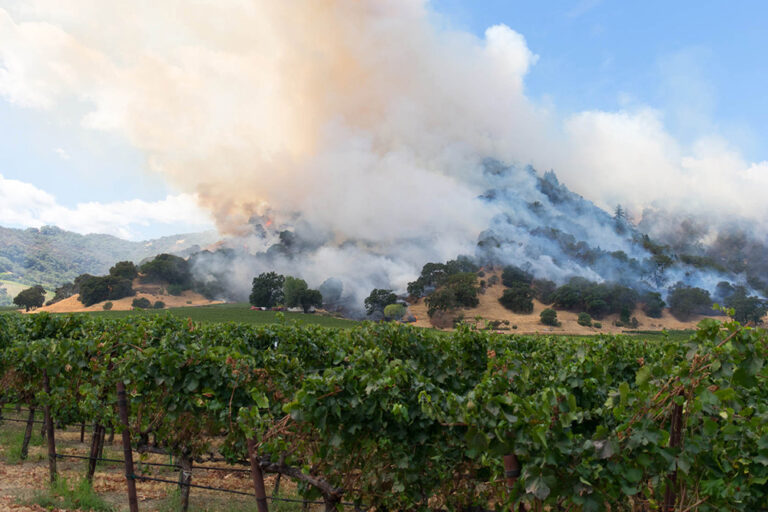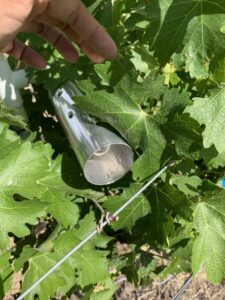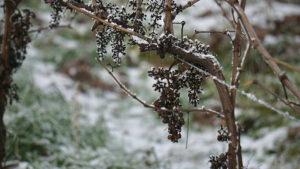
We are talking about quality challenges from climate-related events and ways to plan ahead to achieve better wines,” said moderator Alisa Jacobson to explain the focus of “Winemaking in Today’s Climate Conditions,” a panel discussion at the 2024 Unified Wine & Grape Symposium in Sacramento. “After all, if we’re able to raise the quality of our wines, it will help our entire industry.”
Jacobson, owner and winemaker at Turning Tide Wines in Santa Ynez, Calif., noted recent extreme weather events in Oregon, such as last year’s heavy rains, heatwaves and fires, “caused quality and economic impacts.”
She added California winemakers “had their own heatwave extremes in 2022 during the critical berry ripening season… and Washington seems to be ground zero for heat and cold events.”
“We have to think of extremes when we talk about the economics of wine,” said Elisabeth Forrestel, assistant professor at UC Davis, whose current study focuses on the impacts of varying irrigation on vines, berries and wines.
“What we found is every single year, and through every single heatwave… we had a decrease in tannins and flavonoids,” she said. “If you do not irrigate at all before and during heat waves, you have a reduction in anthocyanins.”
Forrestel advises winemakers to start irrigating their vineyards two days before a heatwave starts and continue until it is over. This strategy “has really positive impact on yield and positive impact on quality.
“I think it’s real important to note water is our biggest tool, whether you’re going to use it for new irrigation or you’re going to use it for misting, or even just misting the ground. It’s really critical to use it with restraint because we know there’s going to be limitations on it.”
Forrestel explained the recent climate on the West Coast has “way more extremes” than in prior years, and this affects her research.
“It’s important to note we’re not looking at just some variations with a baseline change,” she said. “We’re looking at really, really large extremes that are going to have a strong impact on wine considerations, so we really need to think about what those extreme conditions are.”
Ben-Min Chang, a research scientist at the Summerland Research Development Centre of Agriculture and Agri-Food Canada, focused his presentation on damage from heat and cold extremes. He explained his terms.
“Cold damage is basically when the temperature decreases to actually freeze the cell,” he said. “Once the cell is frozen, it expands and explodes the whole cell.”
Cold hardiness means the coldest minimum temperatures that a fully dormant plant can tolerate.
“There’s actually a different level of the whole hardiness around the organs like the trunk,” said Chang. “They can tolerate really cold temperatures.”
However, the same temperatures will hurt the tertiary buds as well as the secondary buds, he said.
“The first thing, of course, if the primary buds are killed, you’re losing a yield, and later on you have to do other jobs like pruning procedures,” said Chang. “What we usually do as some kind of compensation is leave more buds, but that actually means in the coming season you will get more shoots.”
Another factor is the duration of the low temperature. A vine may be able to survive for six hours, but the most recent low temperatures lasted for 54 hours, according to Chang.
That record-breaking weather event in British Columbia happened in January. The temperature went down to minus 25 degrees C at the Summerland Centre. Chang reported more than 50% of the vineyard had major damage, including the trunks.
“Eventually, the trunk damage will influence the decision whether to replant,” he said.
The response is much different when a heatwave threatens a vineyard.
“We actually use the strategy of evaporative cooling,” said Chang. “We want to remove the excessive heat from a canopy, so the concept is a fairly simple: We spray water over the canopy.”
Dr. Tom Collins, assistant professor of grape and wine chemistry in the Viticulture and Enology Program at Washington State University (WSU), manages a research program in wine and spirits aroma and flavor chemistry. His current research focuses on the impacts of wildfire smoke exposure on grape and wine quality.
“If we’re making wines from vineyards that have been exposed to smoke, the wines can sometimes develop these characteristic aromas and flavors: the smoky ashy cigar butt or cigar smoke, cigarette smoke kind of characters,” he said. “Sometimes it’s in the aroma, sometimes it’s in the flavor, sometimes the wines smell fine; they don’t smell smoky, they taste smoky.”
Collins showed a screenshot of WSU’s Department of Ecology air quality monitoring network, a collection of equipment that measures the air quality index of area vineyards, which is especially important when there is a lot of smoke in Eastern Washington. He said similar programs exist in California and Oregon.
“These systems really developed with an eye toward human health, so they’re looking at air quality in cities and towns where the populations are,” Collins said. “It gives us a pretty good indication of where the smoke is, particularly in an event where there was smoke everywhere.”

During the 2020 fires in Washington, monitors were placed in eight different commercial vineyards in Eastern Washington. These monitors collected information to determine what the air quality would be for the rest of the growing season.
“It turned out it was a really great year from the perspective of collecting data about smoke events; not a great year for vineyards, but a good year for our research efforts,” Collins said, adding that much of the smoke in Eastern Washington came from fires in Oregon and California.
Data was collected from a 2020 Labor Day fire that produced smoke in area vineyards.
“Depending on which vineyard you were at, we had densities between about 5 mg per cubic meter up to about 2, which is actually consistent with the kinds of smoke that we apply when we’re doing our smoke exposure trials,” Collins said.
The final speaker was P.J. Alviso from the Duckhorn Wine Company located just outside St. Helena, Calif. When he finally had his opportunity to address the audience in the limited time that was left, he explained that luckily he talks fast.
“I’m going to sum my entire life’s work up in the next seven minutes for you guys,” he said. Actually, he gave some advice instead.

1 in 10 vintages has something go wrong, according to Alviso.
“The reality is these things are happening more often and they’re happening at the worst times for wine quality,” he said, before advising those in the wine business to not put all their eggs in one basket.
Alviso applied that old maxim to the wine business that faces more and more climate extremes, telling those in attendance to consider diversifying, especially if a quarter to half of their business depends on a single vintage.
“Each fermentation is a basket,” he explained. “If something goes wrong, if that fermentation represents some significant part of your business from a qualitative or quantitative perspective, that’s a huge risk, so maybe step back and say, ‘Okay, how do we diversify?’”












